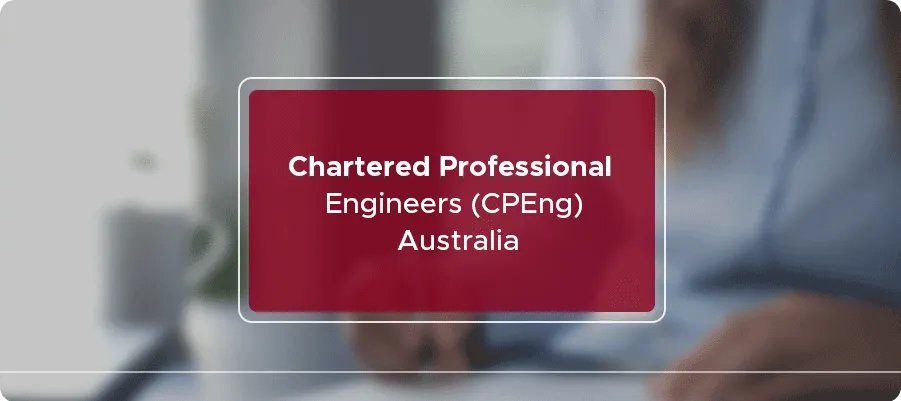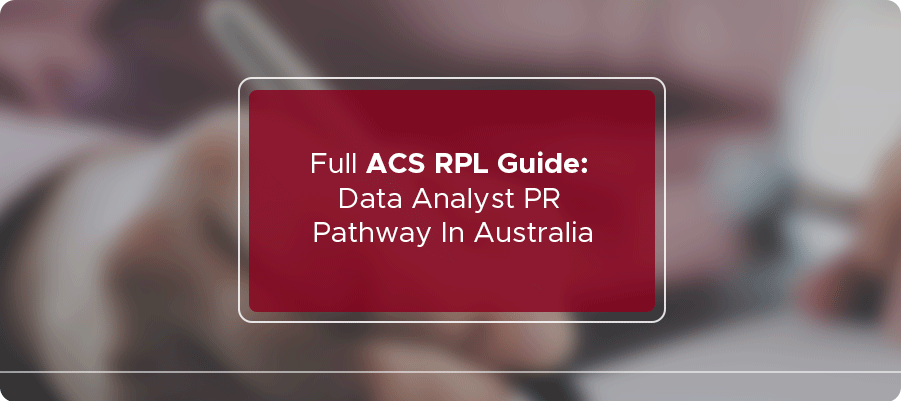
What Is CPEng Australia (EA Chartered Status)?
Chartership is a professional honor bestowed for creative, and forward-thinking engineers. Being a Chartered Professional Engineer (CPEng Australia), engineers demonstrate their dedication, experience, abilities, and industry competence.
Engineers Australia, Australia’s most dynamic and professional engineering society, permits its members to obtain the title of Chartered Engineer, which opens up a plethora of prospects for them. The procedure for obtaining Engineers Australia Chartered Status is described in the following blog.
Engineers are becoming increasingly vital in society, something no one can deny. Engineers have shaped the world now; we live in various ways, including education, health care, agriculture, construction, transportation, communication, and overall societal progress.
Engineers Australia members seeking Chartered status or registration on the National Engineering Register must demonstrate their abilities following Engineers Australia’s stage 2 competency criteria. The ECC, or Engineering Competency Claim, is one of the papers required for Engineers Australia’s Stage 2 Competency Assessment, and it demonstrates a professional engineer’s competencies, abilities, and skills.
Current Chartered Areas of Practice
- Chemical Engineering
- Aerospace Engineering
- Oil and Gas Pipeline Engineering
- Project Management
- Mechatronics Engineering
- Pressure Equipment Design Verification
- Environmental Engineering
- Systems Engineering
- Naval Architecture
- Mechanical Engineering
- Building Services Engineering
- Telecommunications and Electronics Engineering (ITEE)
- Subsea Engineering
- Structural Engineering
- Asset Management
- Geotechnical Engineering
- Electrical Engineering
- Risk Engineering
- safety engineering
- Petroleum Engineering
- Biomedical Engineering
- Amusement Rides and Devices Engineering
- Leadership and Management
- Cost Engineering
- Heritage and Conservation Engineering
What is the Chartered Pathway?
Engineers Australia members must go through a 6-step process to become chartered engineers.
- Self-Assessment
- Industry Review
- Enroll for Chartered
- Chartered Evidence
- Professional Interview
- Chartered Status
Step 1: Self Assessment
The applicants must establish whether their existing knowledge and skills in the industry agree with the Engineers Australia Chartered competencies in the self-assessment process. Engineers Australia Stage 2 Competencies require applicants to rate themselves in the elements described by Engineers Australia Stage 2 Competencies on developing, Functional, Proficient, or advanced scales. Engineers Australia’s Stage 2 competency criteria for each engineering vocation – Professional Engineers, Engineering Technologists, and Engineering Associates – contain a total of 16 elements.
The elements of CPEng Australia are divided into several categories, including:
An obligation to Community: It illustrates how well the applicant collaborates with others in their community, such as clients, superiors, or subordinates, and how well they handle problems and manage risks.
Personal Commitment: Demonstrating how the applicant handles ethical issues, takes responsibility in their work, and improves their skills.
Technical Proficiency: This displays how well the candidate applies engineering technology to come up with novel solutions.
A value in the Workplace: This indicates the applicant’s abilities as a leader, planner, and originator of Engineering tasks and their ability to collaborate with others at work.
Following are the four rating types of the EA CPEng Australia applicant:
Developing: The applicant is still learning and may require supervision when practicing.
Functional: This refers to an applicant’s ability to work freely and without supervision.
Proficient: This indicates that the applicant can work independently, provide instruction, and oversee others.
Advanced: This indicates that the applicant is a strong leader who can make decisions, have a broad knowledge base, and train others.
Engineers Australia provides applicants with advice on applying for the Chartered title and continuing professional development based on their grades. The candidate can complete the self-assessment process as many times as they desire.
Step 2: The Industry Review
After completing the self-assessment process and receiving a grade, the applicants must now seek input from their peers on their Engineers Australia CPEng Australia abilities. Applicants will not advance to the third level unless they do not have a ‘Functional’ Rating. If you have a ‘Developing’ rating, how can you still start with the Industry Review?
Now they have to develop evidence statements and get peer evaluation. They can upgrade their self-assessment rating at any time and complete a new industry review as a result. The industry evaluation procedure is not time-limited.
Who can be considered as an Industry Reviewer?
- If an engineer is already a Chartered member of Engineers Australia or a member of the Engineering Team, he is eligible to be an industry reviewer of a candidate.
- The candidate should have at least seven years of engineering experience.
- They should work in the same field as the applicant and thus be familiar with their job. It is not, however, a requirement. They can even be from a different industry, but they will need to present supplementary proof.
- It should also be their own volition to submit a review to the candidate. Every Chartered Engineer is not required to be a reviewer.
- Engineers Australia also gives detailed instructions on how to perform the review process to the reviewers.
Step 3: Enroll for CPEng Australia
Applicants can enroll in the chartered application once they have received a Functional or higher rating. Applicants pay the Chartered Engineer Australia fee and submit their CV and CPD (Continuing Professional Development) log at this stage.
By this stage, the applicant should have finished their industry review and submitted it as well. The candidate must also state which areas of knowledge they wish to pursue chartered status in.
Area of Practice: The Chartered Engineer’s Area of Practice might be thought of as their “purpose.” It simply depicts the applicant’s preferred occupation. The applicant can become a Chartered Engineer in multiple fields of practice. Engineers Australia offers a comprehensive range of Areas of Practice, such as System Engineering, Project Management, Civil Engineering, Asset Management, and Environmental Engineering, to name a few.
Step 4: Chartered Evidence
Chartered Evidence is a compilation of documents, presentations, drawings, emails, reports, and other items demonstrating the applicant’s engineering abilities to get CPEng Australia. You must submit appropriate proof for each of the 16 competencies that you ranked during the Self-Evaluation procedure. Engineers Australia has a comprehensive list of which Evidence is appropriate for which type of competency. As a result, the applicants must submit one.
Engineers Australia assessors analyze all of the materials submitted by the applicant, including their self-evaluation, CV, CPD log, and Areas of Practice, once they have enrolled for the Chartered application. The candidate is then asked to participate in an Evidence Conversation, a phone-based discussion, within three weeks.
During this conversation, the candidate learns exactly what Chartered Evidence they need to submit for formal review. The applicant can ask questions to obtain a better knowledge of what is expected of them. The applicant can upload the Chartered Evidence documents as per the CPEng Australia standards after the Evidence Discussion. The Chartered Evidence documents are assessed for around five weeks after they are submitted.
Step 5: Professional Interview
The candidate will be invited to a Professional Interview after the assessors have reviewed the Chartered Evidence and found it satisfactory. You can schedule the professional interview session within four weeks of the review’s conclusion.
The interview lasts around an hour, during which time the candidate may be asked to deliver a presentation and explain the Chartered Evidence they submitted with their application. One Engineers Australia assessor and a panel of engineers from outside industry would make up the interview panel.
Step 6: Chartered
After the interview, the candidate will receive an email with the results, including the candidate’s Chartered Award and Areas of Practice. Engineers Australia will also present the candidate with a certificate confirming their Chartered Status after some time. If the candidate does not earn Chartered Status, Engineers Australia will give them relevant information and advise on obtaining it.
They will also have the opportunity to submit further documentation, provide extra information or Evidence, and return for a personal interview. On the other hand, candidates have the opportunity to challenge Engineers Australia’s decision if they believe it is not appropriate in light of their Evidence.
Choose CDRReportWriters?
Engineers who want to migrate to Australia can get a CDR report from CDRReportWriters. Our competent professionals can provide you with high-quality CDR writing and reviewing, Career episodes, Summary Statements, and CDP writing services.





